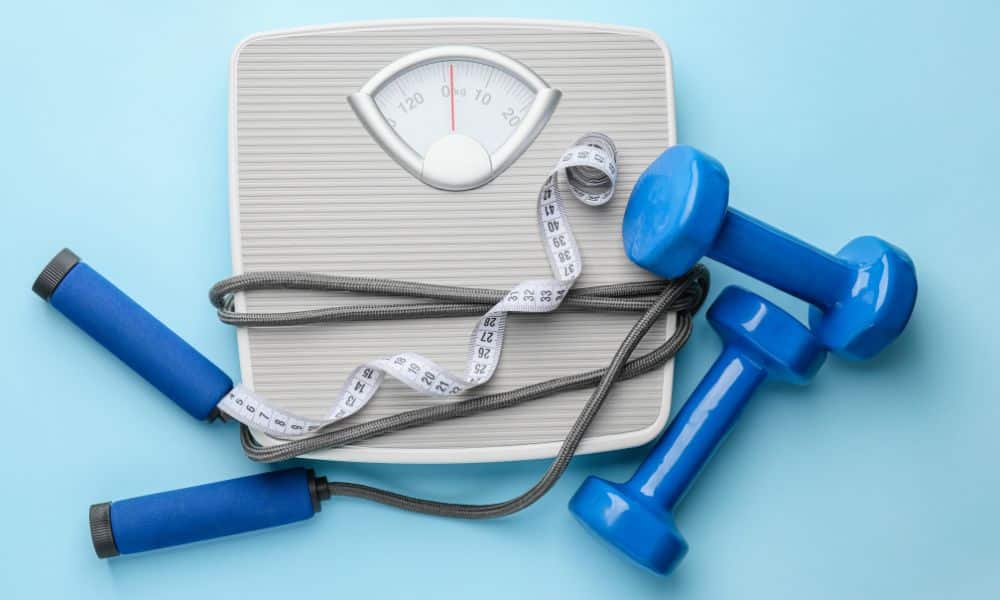Hitting a weight loss plateau can be frustrating, especially when consistently dieting and exercising. A weight loss plateau occurs when your progress stalls despite sticking to your plan. Fortunately, breaking through a plateau is possible with the right adjustments. This article will explore effective strategies to help you overcome weight loss plateaus and continue moving toward your goals.
What is a Weight Loss Plateau?
A weight loss plateau is when your body stops losing weight despite maintaining your usual diet and exercise routine. This happens because your metabolism adapts to your new lower weight, reducing the calories you burn daily. As a result, your calorie deficit shrinks, halting further weight loss. Understanding why plateaus occur is the first step in making the necessary changes to overcome them.
Why Do Weight Loss Plateaus Happen?
Weight loss plateaus occur due to several factors:
- Metabolic Adaptation: As you lose weight, your body needs fewer calories to function, causing your metabolism to slow down.
- Loss of Lean Muscle Mass: Dieting can lead to muscle loss, further reducing your metabolic rate since muscle burns more calories than fat.
- Dietary Inconsistencies: Small slips in your diet, such as hidden calories in snacks, drinks, or condiments, can add up and halt progress.
- Reduced Physical Activity: You might unconsciously reduce your physical activity as you diet, burning fewer calories throughout the day.
How to Break Through a Weight Loss Plateau
Breaking through a plateau requires smart diet, exercise, and lifestyle adjustments. Here are effective strategies to get your weight loss back on track:
1. Reassess Your Caloric Intake
Your calorie needs change as you lose weight. Recalculate your daily caloric needs based on your current weight and adjust your intake accordingly. Use a calorie tracking app to monitor your intake closely and ensure you maintain a calorie deficit.
- Action Step: Use a calculator to determine your new daily calorie needs. Aim for a 500-calorie deficit to continue losing weight at a healthy rate.
2. Increase Protein Intake
Increasing protein intake can help preserve lean muscle mass and boost metabolism. Protein has a high thermic effect, meaning your body burns more calories digesting it compared to fats and carbohydrates. Aim for 1.2-1.6 grams of protein per kilogram of body weight.
- Action Step: Add high-protein foods such as chicken, fish, eggs, and Greek yogurt to your meals and snacks to help maintain muscle and promote fat loss.
3. Vary Your Exercise Routine
Your body adapts to repetitive workouts, which can reduce their effectiveness. To break through a plateau, change up your exercise routine. Incorporate high-intensity interval training (HIIT), strength training, or new cardio exercises to keep your body challenged.
- Action Step: If you usually do steady-state cardio, switch to HIIT workouts twice weekly to increase calorie burn and boost metabolism.
4. Incorporate Strength Training
Strength training helps build and maintain muscle mass, which increases your resting metabolic rate. Adding more muscle means you burn more calories at rest, making it easier to maintain a calorie deficit.
- Action Step: Include compound exercises like squats, deadlifts, and bench presses into your weekly routine to stimulate muscle growth and increase calorie expenditure.
5. Adjust Your Macronutrient Ratios
Changing the balance of proteins, fats, and carbohydrates can sometimes reignite weight loss. Lowering carbs slightly and increasing protein can improve satiety and keep you feeling fuller for longer, which helps control your overall calorie intake.
- Action Step: Experiment with a macronutrient ratio of 40% protein, 30% fats, and 30% carbohydrates to optimize your diet for fat loss.
6. Manage Stress Levels
Stress can elevate cortisol levels, leading to weight gain or making weight loss more difficult. High cortisol levels are linked to increased appetite and cravings for sugary, high-calorie foods. Managing stress through meditation, deep breathing, or yoga can help you overcome this barrier.
- Action Step: Dedicate 10 minutes daily to stress-reducing activities like meditation, breathing exercises, or a short walk.
7. Ensure You Are Getting Enough Sleep
Poor sleep disrupts your hormones, particularly those that regulate hunger and appetite, such as ghrelin and leptin. Aim for 7-9 hours of sleep daily to support weight loss and overall health.
- Action Step: Establish a bedtime routine, limit screen time before bed, and create a restful sleep environment to improve sleep quality.
8. Try Intermittent Fasting
Intermittent fasting can help break through a weight loss plateau by naturally reducing calorie intake and improving insulin sensitivity. Popular methods include the 16:8 method, where you fast for 16 hours and eat during an 8-hour window.
- Action Step: To help control your calorie intake, start with a simple intermittent fasting protocol, such as eating between noon and 8 PM.
Common Mistakes to Avoid When Breaking a Plateau
- Drastic Calorie Cuts: Severely cutting calories can backfire by slowing your metabolism and increasing muscle loss.
- Over-reliance on Cardio: Excessive cardio can lead to muscle loss and metabolic slowdown. Balance it with strength training.
- Ignoring Hidden Calories: Be mindful of hidden calories in sauces, beverages, and snacks that can sneak into your diet.
Key Takeaways
- Weight loss plateaus are common due to metabolic adaptations, muscle loss, and inconsistencies in diet and exercise.
- Smart adjustments, such as reassessing your caloric intake, increasing protein, changing exercise routines, and managing stress, can help you break through plateaus.
- Avoid common mistakes like drastic calorie cuts and over-reliance on cardio to maintain muscle mass and metabolism.
By implementing these smart adjustments, you can break through your weight loss plateau and continue progressing toward your fitness goals. Stay consistent, listen to your body, and adjust as needed to keep your weight loss journey on track!
Read Next…
- Is It a Sin to Be Overweight? What the Bible Really Says

- Fat Loss vs. Weight Loss: Why the Scale Doesn’t Tell the Full Story

- Christian Weight Loss: Biblical Principles for Losing Weight

- Rest and Recovery: How It Boosts Fat Loss and Muscle Growth

- Weight Loss and Body Transformation: Things You Need to Know





